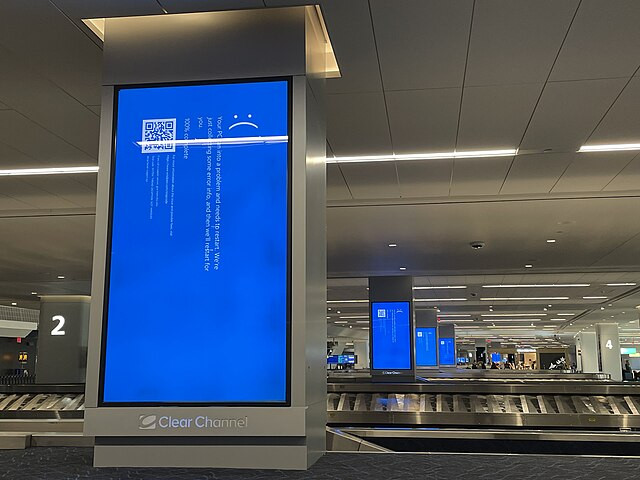A software glitch in CrowdStrike's cybersecurity system led to a massive global technology outage last week, causing significant disruptions across multiple industries, including airlines, hospitals, banks, and other businesses. The incident, which affected approximately 8.5 million computers running Microsoft Windows, has been described as the largest IT outage in history.
CrowdStrike revealed on Wednesday that a bug in its testing program, designed to catch issues before software updates are released to customers, failed to flag problematic content data. This oversight allowed the faulty update to be pushed out, leading to a critical error that resulted in widespread system crashes, often referred to as the "blue screen of death" (BSOD).
"The bad data led to a critical error that could not be gracefully handled, resulting in a Windows operating system crash," CrowdStrike explained in an update on its website.
The company has taken steps to prevent similar incidents in the future, including staggering the rollout of updates, giving customers more control over update timing, and providing detailed information about planned updates. A significant number of the affected computers have been restored, but many businesses are still grappling with the fallout from the outage.
Insurers have begun calculating the financial impact of the glitch, with estimates suggesting that Fortune 500 companies alone could face direct losses exceeding $5 billion. The health care and banking sectors were particularly hard hit, with losses estimated at $1.94 billion and $1.15 billion, respectively. Airlines, including Delta, American, and United, suffered a collective loss of $860 million, according to Parametrix, a cloud monitoring and insurance firm.
Fitch Ratings, a major U.S. credit ratings agency, highlighted the risks posed by single points of failure in critical IT systems. "This incident highlights a growing risk of single points of failure," Fitch stated in a blog post, warning that such vulnerabilities are likely to increase as companies consolidate vendors to leverage scale and expertise.
The technological havoc has prompted scrutiny from government regulators and lawmakers. U.S. House leaders have called on CrowdStrike CEO George Kurtz to testify before Congress about the company's role in the outage. The Department of Transportation is also investigating the incident's impact on the airline industry.
CrowdStrike issued a preliminary report detailing the cause of the meltdown. The issue originated from a file used by CrowdStrike's security platform to detect hacking threats on customer devices. A bug in the cloud-based testing system allowed the flawed file to be released despite containing problematic data. The faulty update was published just after midnight Eastern time on July 19 and was rolled back an hour and a half later, but by then, millions of computers had already downloaded it.
The incident primarily affected Windows devices that were on and capable of receiving updates during the early morning hours. Europe and Asia experienced more significant disruptions due to the timing of the release, while the Americas were less impacted.
When Windows devices using CrowdStrike's tools accessed the flawed file, it caused an "out-of-bounds memory read," leading to the BSOD. Fixing the issue requires manual intervention to delete the problematic file, a slow and labor-intensive process given the scale of the impact.
Microsoft, which played no direct role in the outage, acknowledged the interconnected nature of the global technology ecosystem. "This incident demonstrates the interconnected nature of our broad ecosystem," the company said in a blog post.
In response to the crisis, CrowdStrike has pledged to enhance its testing and validation processes. The company plans to introduce new checks to prevent similar issues and move to a staggered approach for releasing updates to avoid widespread disruptions. Additionally, CrowdStrike aims to give customers more control over when updates are installed.





